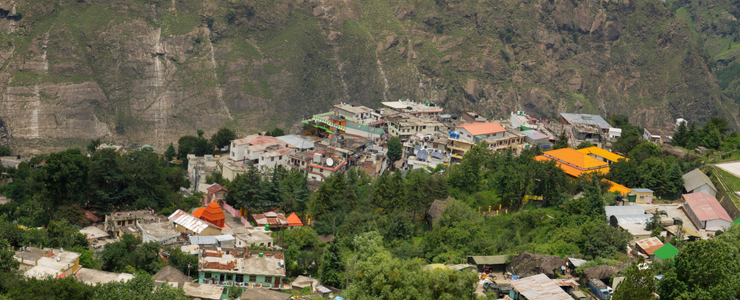
Joshimath, also known as Kartikeyapura named after Kartikeya, the God of Katyuri kings and the son of Lord Shiva, is the ancient & picturesque town in the Chamoli district of Uttarakhand, which has been breaking for some time now, however, the urgent pleas to mend it has been ignored every time. The town lies in seismic zone V, which makes it the most active earthquake prone area in the Indian Himalayan geographical region and is anyway precariously positioned when it comes to frequent as well as high intensity earthquakes.
The Himalayan biome works in a very complex manner compared to the other biomes on the planet. Further, the Geosphere (Land), Hydrosphere (Water) and Biosphere (Ecology) are all the combined components of the Himalayan mountains and they keep interacting with each other continuously and comprehensively in the young Hindu-Kush Himalayan (HKH) region. Being an active plate tectonic collision zone it adds on to the continuity of geographical events, majorly disastrous (flash floods, avalanches, landslides, earthquakes, debris flow, etc.) which results in the loss of human lives, flora & fauna and livestock on the third pole of the earth.
The land subsidence being witnessed in Uttarakhand’s Joshimath over the past few days has triggered an ecological and humanitarian crisis, and it arises from the complex mechanism of Himalayan plates active for almost over a century now when the area was formed by debris of a landslide that happened at the time.
It is also to be noted that the hydrogeological cycle never works in silos, instead is always inter-disciplinary in nature. With the majority of the Himalayan states in the country covered under the watershed of the three mighty glacier-fed river water systems, the Ganga, the Brahmaputra and the Indus; springs, which is one of the major natural source of ground water, are the result of the same interactive processes (aids in the formation of karst geomorphology, fractures and cracks in the rocks) that keeps going on inside-out in the Himalayan mountains. The dynamic weather phenomenon associated with glaciers plays an equally important role in the formation of clouds for rainfall and also in interaction with the forest reservoir.
A recent joint report from the Food and Agriculture Organization (FAO) and United Nations Environment Program published in 2020 underscores the impact of the Covid-19 pandemic on the sustainable management of forests. In the past two years, Uttarakhand has been wreaked by natural calamities; the flash floods in Chamoli in February, 2021, an avalanche above Joshimath town in April the same year, cloud burst in Devprayag in May, 2021, and most recently, the land subsidence and houses on unsteady ground in Joshimath town. The young and varied rock formation, especially the loamy sand to sandy clay loam, in the Himalayas exacerbates the frequency of the extreme events.
The extreme weather events have resulted in the disappearance of a vast section of vegetation from the state’s forested and inhabited areas, including the villages. A sense of fear pervades the villages, especially those perched on the steep, inclined ranges of fragile slopes. The twin combination of deforestation and controlled blasting for large infrastructural projects are the prime anthropogenic activities responsible for frequent devastating events in Uttarakhand being witnessed now. The drying of springs due to dropping water recharge and increased extraction is leading to pores in the soil and rocks and, hence, accelerates the land subsidence.
There is an urgent need to focus on the preventive measures to protect the endangered ecology of Joshimath and nearby areas. Large scale afforestation plans need to be undertaken to boost soil binding and holding capacity which will eventually recharge underground aquifers as a portable source of water and also will fill the voids in rocks, enhancing the land resistance. It is high time for the state to rework its policy structures and build strong systems towards big hydro-power & infrastructural projects with private partners. It is imperative to have participatory involvement of village communities at the grass root level since they are the primary stakeholders of the resources. Women in the mountains often undertake responsibilities of farming and run small shops. It is important to involve them to build a sense of ownership and security in the community.
Controlled blasting which generate little tremors in the earthquake prone Himalayas should be stopped urgently or an alternative to controlled blasting should be brought in place after proper scientific studies.
Development should not be at the cost of sustainable practices or destruction of the natural habitat. Most importantly ‘green tourism’ should be the way ahead to reduce the pressure on mountains, while generating employment opportunities and preserving the heritage of Himalayas as much as possible.
It’s the need of the hour to keep our mutual and short-term benefits aside if the horrific histories of Kedarnath disaster in 2013, and Rishiganga and Dhauliganga disaster of 2021 is not to be repeated. Another instance of neglect will have us hurtling down a disastrous path which has no return.
Priyanka Vadrevu is a Research Associate at the Centre for Himalayan Ecology at The Energy and Resources Institute (TERI), New Delhi

